
Anyone else ever feel overwhelmed with all the (often contradictory) parenting advice out there? Or perhaps you feel like you’re not sure what parenting tools are most effective? When we feel this way, we go back to the basics. Back to the research.
Authoritative Parenting
The parenting style that has been most frequently shown to have the best outcomes is an Authoritative parenting style, which combines high warmth with boundaries.
For example, a recent meta-analysis looked at 1,435 studies on parenting styles and behavioral problems in youth (Pinquart, 2017). This analysis found that authoritative parenting, parental warmth, high behavioral control, and autonomy granting were related to less behavioral challenges in kids. In contrast, harsh discipline practices, and authoritarian, permissive, and neglectful parenting styles were associated with more behavior concerns.
Great! Now we know that warmth plus boundaries can be our mantra — our compass as we navigate this awesome and crazy journey. But what does that actually mean?
Evidence-Based Parenting Programs
The good news? Decades of research provide us with concrete tools for striking this balance in our parenting! When identifying effective tools, we focus on only the tools and programs that have the highest level of research to back them up. There is a difference between parenting advice that might sound good in theory and that which is backed by hard evidence.
You can determine how much evidence a given program has by looking at the California Evidence-Based Clearinghouse here. Examples of programs with the highest level of support include Positive Parenting Program (Triple P) and The Incredible Years.
This is where we can breathe a collective sigh of relief. These top programs, the ones with the MOST evidence to support their effectiveness all share common core components! While different in tone and terminology, their foundations are the same.
Importantly, the bulk of positive outcomes from these programs comes from working with us, the parents and caregivers. We are the change agents! These evidence-based programs provide specific tools to help parents implement Authoritative parenting.
When parents use these tools, not only do challenging behaviors decrease, but there is an abundance of other positive long-term outcomes:
- Decreased parent stress
- Improved parent-child relationships
- Improved child mental health and social-emotional outcomes
- Increased consistency between caregivers
- Decrease in harsh and/or inconsistent parenting practices
The Healthy Parenting Tree
Those outcomes sound great — so you may be thinking, “where do I start”?
The answer may surprise you. We do not start with consequences! The most effective and well-studied parenting programs never start with how to respond to challenging behaviors. Instead, they start with how to prevent many of those behaviors to begin with!
In our online parenting course, Essentials, we conceptualize the overlapping components of top parenting programs in the HFT Healthy Parenting Tree. The four must-haves of effective parenting include tools for: 1) relationship building, 2) teaching kids new skills, 3) improving cooperation and 4) limit setting. The specific tools within each of the 4 categories are summarized below and taught in detail in our Essentials course.
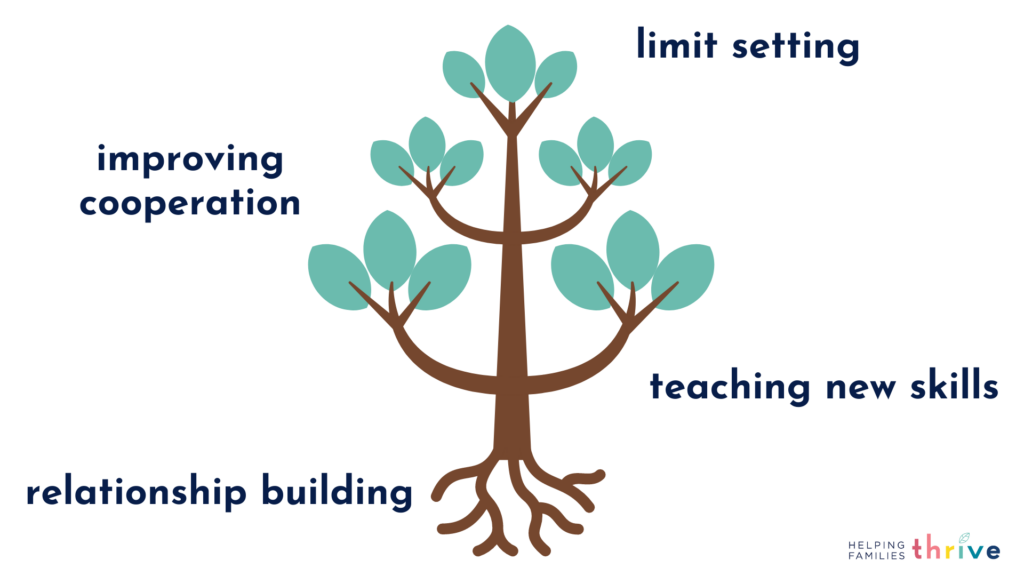
Why We Never Start with Consequences
A tree is strongest in its roots and sturdy trunk, and smaller and more fragile as you work your way up to the top. When we think about parenting we can think of things the same way. We start at the base of our tree, relationship building and teaching skills, to ensure our base is strong and steady before moving into boundaries and limit setting.
If our “go to” is issuing a consequence for every single challenging behavior, then we end up using consequences too frequently and ineffectively. That means our balance of warmth and boundaries is off, and our tree has become too top heavy and unstable. Also, there’s no way to be consistent when we’re doing it this way! Consequences are only effective if they are used sparingly and in the context of the other core components of the healthy parenting tree.
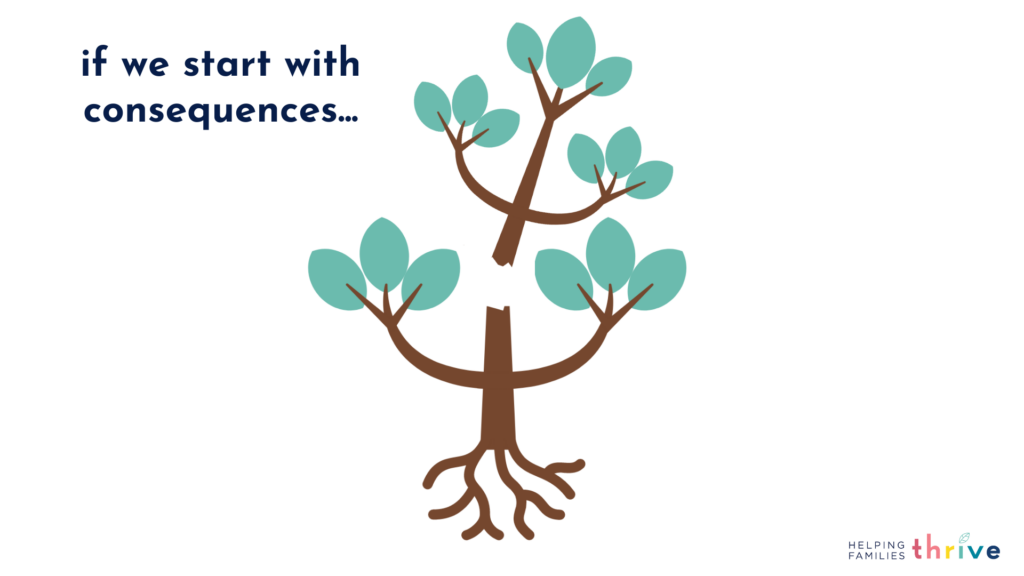
The Roots: Parent-Child Relationship
But what if your child is hitting you, having tantrums non-stop, and not listening? Don’t we need to stop those behaviors immediately?
Every evidence-based resource is going to have you start with relationship building — tools to fill up your child’s (and your own) emotional piggy bank and strengthen your relationship. Starting here is especially important when there are really difficult behaviors occurring, such as aggression.
Starting with relationship building is about creating the resilient, strong roots your family needs to withstand the strong emotional storms that come your way.
This is not about “fluff” or being perfectly positive all the time. It’s about learning really specific, research-backed ways to invest in your parent-child relationship. It also includes becoming more aware of ways we as parents accidentally do things that undermine our connection.
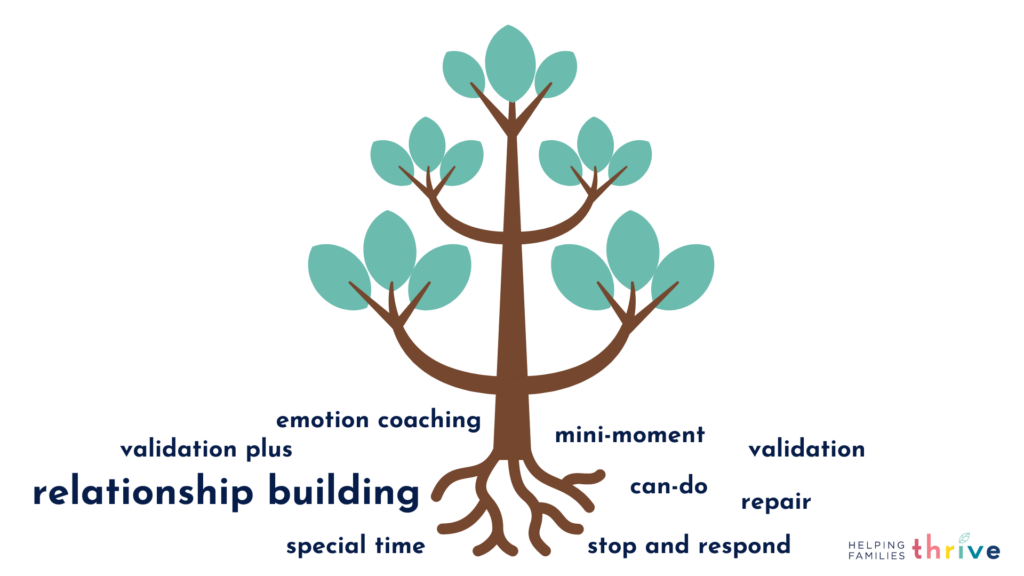
The Trunk: Teaching Skills
Once we are confident that the relationship roots are strong and our piggy banks are full, we will likely begin to see an increase in positive behaviors (in ourselves and our kiddos).
Our next step is identifying and remedying missing skills. Often times, what looks like “oppositional” behavior is simply a missing skill in disguise. If a child has a learning disability such as dyslexia, we don’t seem to question if we need to teach them to read in a unique, more concrete way. But if our child has challenges with emotions, motivation, and behavior, we often don’t give the same grace. Behavior is communication.
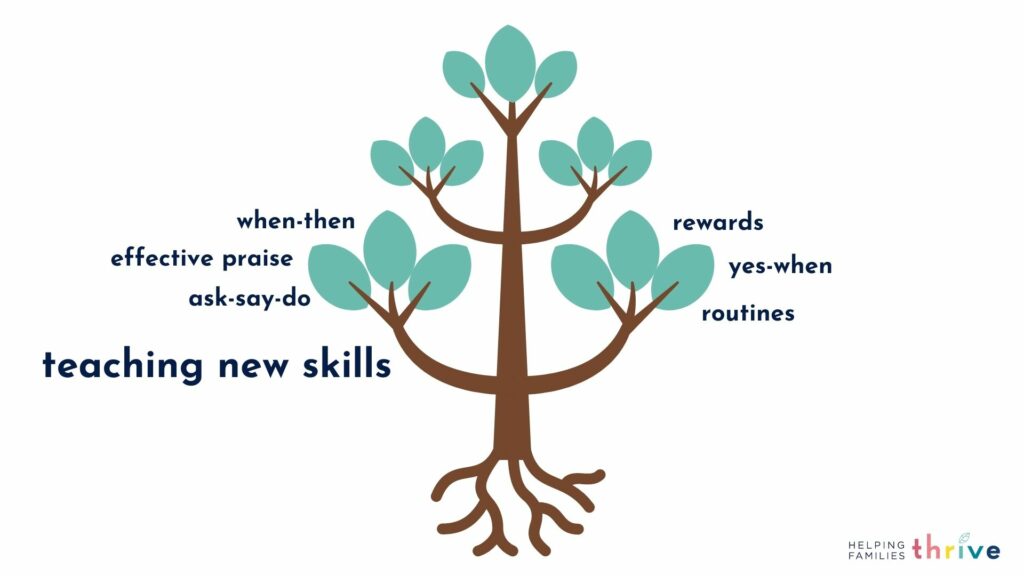
Sturdy Branches: Improve Cooperation with Clear Expectations and Boundaries
Once we know our relationship roots are solid and we’ve taken the time to address missing skills, parents will likely see even more progress! This is when it is tempting to jump into consequences. However, there are still additional strategies parents can use to improve cooperation that don’t involve consequences. In addition, before we can consequence a child for crossing a boundary, we need to make sure our expectations and boundaries have been crystal clear, concrete and consistent to our child (not just to us).
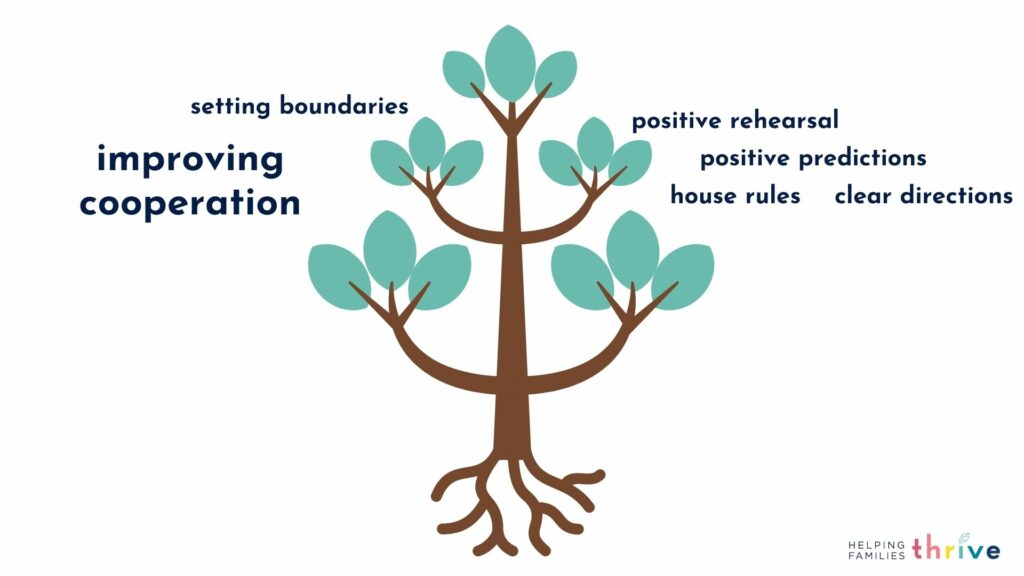
The Tree Top: Limit Setting with Natural and Logical Consequences
We’ve arrived! You sought out help to get your child to stop hitting and now you are finally told what to do when they hit, scream, and tantrum! But guess what? For many families, once all of these prevention strategies are in place, there is limited need for these consequences. Had you started here at the top, your parenting tree would have been quite unstable. However, you’ve taken the time to build solid roots and sturdy trunk. That work ensures that consequences will be used sparingly, which is the only way they can be effective.
Let’s be honest, even when parents do all the prevention work, kids will STILL cross boundaries! Testing boundaries is a healthy part of child development! If you have a child with a “spicy” temperament or neurodiversity such as ADHD, they may test those boundaries more frequently or forcefully. (Important note: The evidence-based parenting programs we’ve been referencing are well-studied in children with ADHD).
We’ve noticed a tendency for parenting recommendations on social media to be reduced to “connection” with less clear or less accurate advice on how parents can effectively respond to really difficult behaviors. Suggesting that if parents are just connected enough with their kids and validate just right, everything else will fall into place, is not only not supported by research, but it can cause unnecessary shame for parents.

Individual Differences Matter
It is important to respect and accept differences in parenting journeys and the needs of individual children. Some families may not need these strategies once they get here. For others, even with all the prevention tools in place, the top of the tree is crucial. For example, a recent meta-analysis of parenting interventions looked at which components of the interventions were most effective (Leijten et al., 2019). They found that for families with high levels of disruptive behaviors, programs that taught parents non-violent discipline strategies (such as natural/logical consequences and time-out) led to more improvements in children’s outcomes than programs without these skills. When parents have effective, safe alternatives to harsh punishments, they are going to be more effective in responding to challenges that arise. This is better for both parents and children.
Your Positive Parenting Journey
Remember, each day you are striving to balance warmth and boundaries. If something blows up spectacularly, go back to the roots of the tree and work your way up, one step at a time.
This parenthood adventure will be a wild ride. The best we can do is seek out the highest quality information possible, use the tools the best we can, and adjust course when needed.
-Helping Families Thrive
Now that you know what the tools are, it’s natural to need help in actually implementing them. We urge you to reach out to a provider or resource that is grounded in evidence-based practice. Our Essentials online parenting course teaches the skills from the top evidence-based programs. You can learn more about it here.
Additional Parenting Resources
Parenting programs with highest level of research support:
- The Incredible Years
- Positive Parenting Program
- Parent Child Interaction Therapy
- Parent Management Training
Parenting programs with strong research support:
- Tuning in to Kids
- Collaborative and Proactive Solutions (Previously called Collaborative Problem Solving)
References
Leijten, P., Gardner, F., Melendez-Torres, G. J., Van Aar, J., Hutchings, J., Schulz, S., … & Overbeek, G. (2019). Meta-analyses: Key parenting program components for disruptive child behavior. Journal of the American Academy of Child & Adolescent Psychiatry, 58(2), 180-190.
Pinquart, M. (2017). Associations of parenting dimensions and styles with externalizing problems of children and adolescents: An updated meta-analysis. Developmental psychology, 53(5), 873.



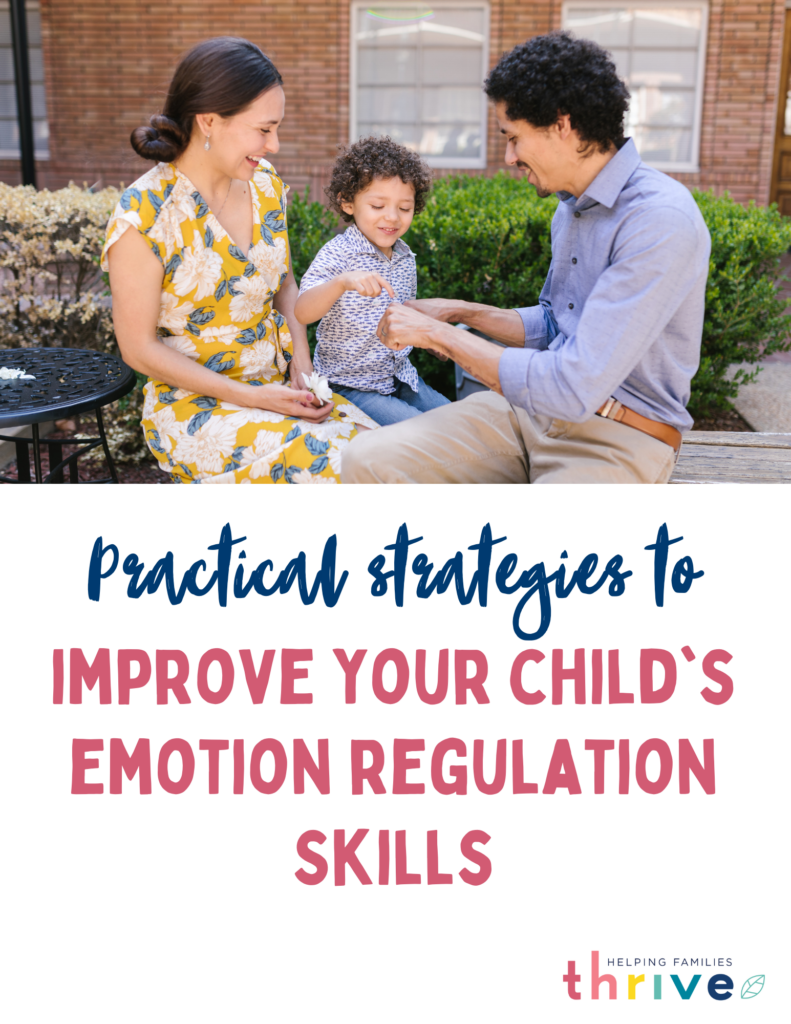


13 Comments
Comments are closed.